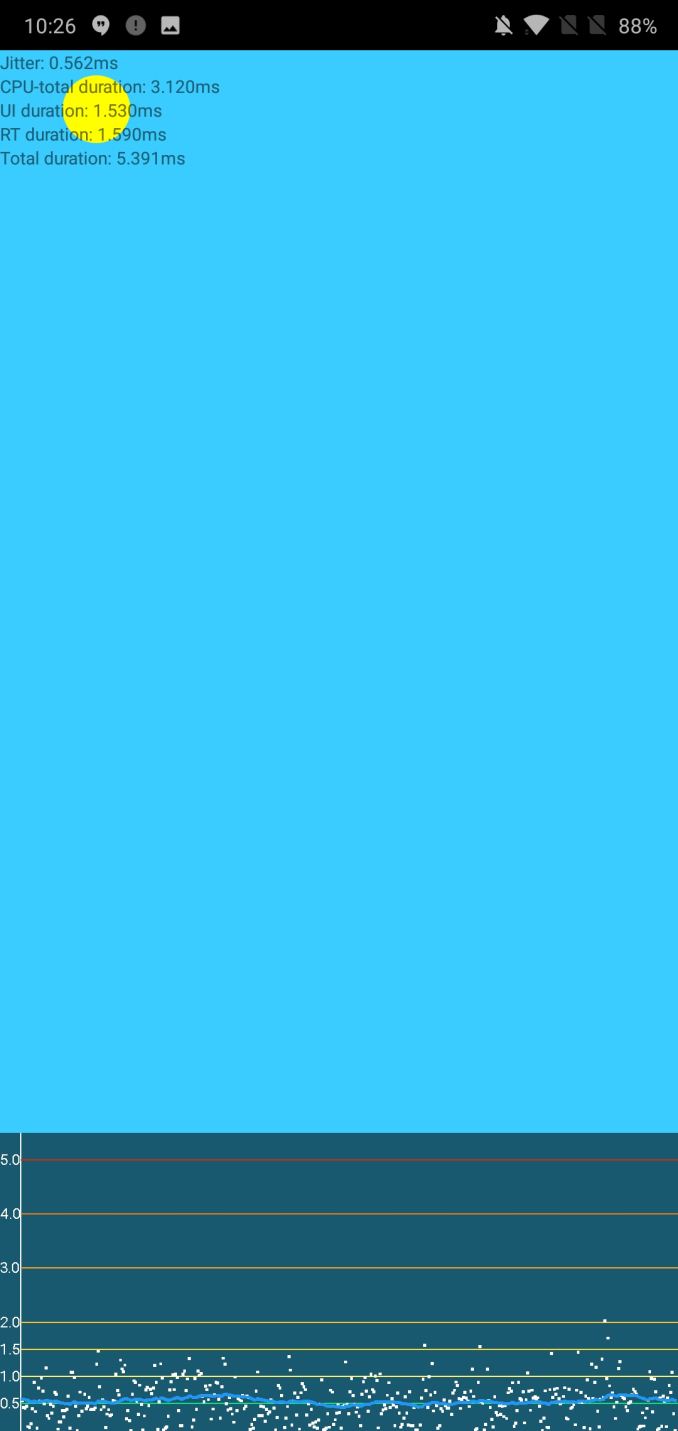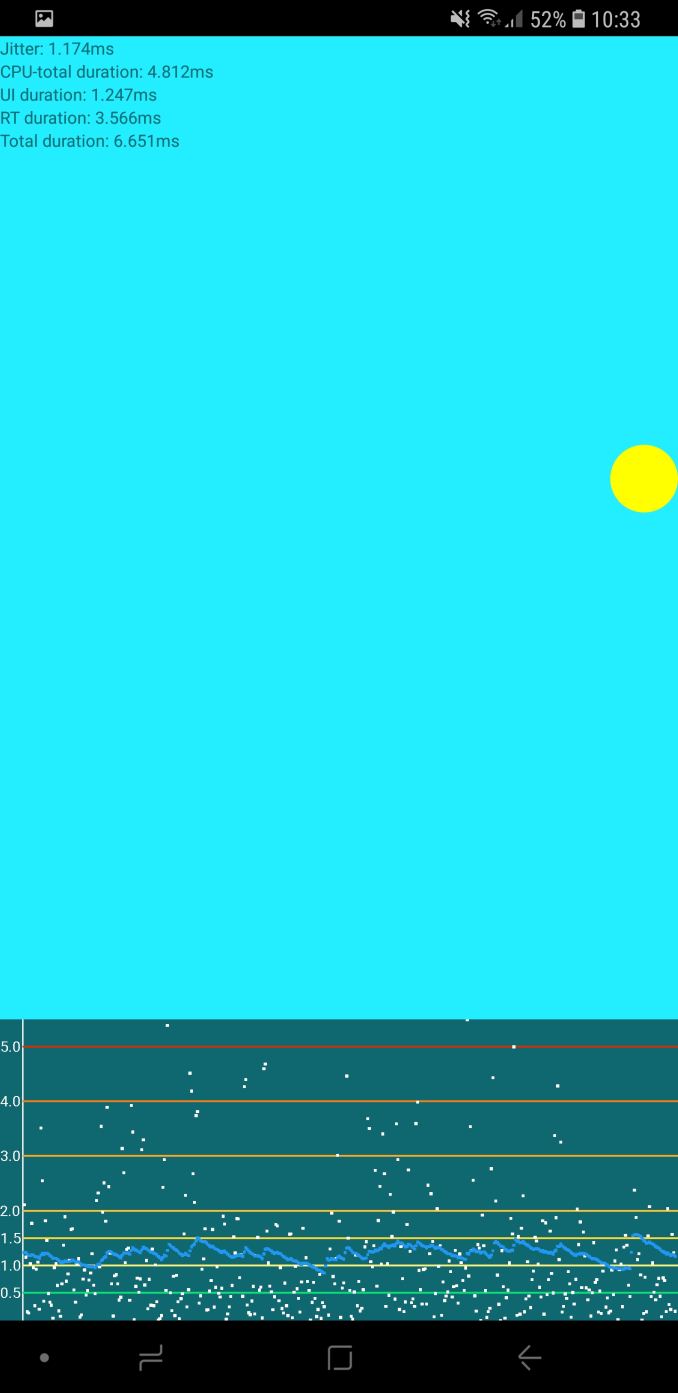The OnePlus 6 Review: Among The Best Of 2018
by Andrei Frumusanu on July 27, 2018 8:30 AM EST- Posted in
- Mobile
- Smartphones
- OnePlus
- OnePlus 6
System Performance
Another Snapdragon 845 device, another system performance section to dwell into. By now following the Galaxy S9 review and Mi MIX 2S review we should have some clear expectations of how the OnePlus 6 should perform. In my MIS 2S review in particular I was very vocal about how superbly the phone performed in terms of performance, and attributed this to a great software implementation on the side of SoC. The OnePlus 6 very much deserves the same praise as it not only has the same extraordinary snappiness, but actually ever so slightly manages to beat the MIX 2S in some cases.

Starting off with PCMark’s Web Browsing test, the OnePlus 6 is very much within the top scorers in terms of performance.

The video editing test again is mostly performing as expected.

In the Writing 2.0 test which uses Android APIs and does operations such as text editing and PDF rendering the OnePlus 6 actually manages to take the top spot in terms of performance. This test alone correlates extremely well with overall system performance of a phone and the OP6 taking first place is indeed very well representative of the phone’s feel.

Photo editing test, alongside the Mi MIX 2S also takes top spots among current devices.

The data manipulation score averages out among top Snapdragon 845 devices.

Finally the total score matches the Mi MIX 2S. There’s not much more to say here other than Qualcomm’s scheduler improvements in the S845 BSP have really paid off this generation and this directly results in excellent real-life performance.


The web tests showcase pretty much identical performance to the Mi MIX 2S which in turn both slightly outperform other S845 devices such as the Galaxy S9 and LG G7.
UI Fluidity
Over the past few months there’s been more outspoken discussions about Android speed tests versus actual device fluidity. In general the latter is extremely hard to quantize into a figure and there will always be corner cases or outliers that will probably perform better or worse when comparing between devices.
In the context of the OnePlus 6 as well as Snapdragon 845 devices I’ve looked more into what actually is different between them and what is seemingly causing the OP6 and MIX 2S to perform better than, say the Snapdragon Galaxy S9. Looking deeper into the kernel it looks like OnePlus and Xiaomi are both using a newer kernel build with more scheduler modifications than the kernels running on the S9 and G7. The details here go quite low level and is out of the scope of any public article, but the effects can be easily seen.


OnePlus 6 vs Galaxy S9+ (S845) Jitter Test
In the UIBench Jitter test we see the difference between the OnePlus 6 and the Galaxy S9 – the latter has a lore more inconsistent rendering frame-times. While in this test both have very clearly great frame-times well under 16.6ms – having more consistent frame times in turn can avoid random workload events that might push frame times over the deadline and result in dropped frames. The OnePlus 6 so far has been the best device in this particular test – only the Pixel phones come near to it but they don’t seem to have the same consistency over time.
Overall system performance of the OnePlus 6 deserves the same praise as the MIX 2S – both devices are currently the very best and fastest on the market and you will be absolutely not disappointed in their performances.










90 Comments
View All Comments
jospoortvliet - Thursday, August 2, 2018 - link
On screen buttons, really? the 90's want you back... Nokia n9 and Palm WebOS showed the future years ago, it is a bloody shame it took Apple to bring it to Android. Very disappointing to notice so clearly that Google only innovated when forced, even though the better paradigm was already shown to work and just lying there to be adopted..Thefinn - Friday, July 27, 2018 - link
Yeah, notch makes it useless. I don't think so.What are you smoking? It's actually a great phone, but to each his own
amosbatto - Wednesday, August 22, 2018 - link
The problem with the notch is that it gives less space for the notification icons, which I find useful. Even worse is that 19.5:9 screens leave no room for front-facing speakers. Decent audio is far more important than more vertical pixels which I will never use. Also, the smaller the bezel, the less protection for the screen. Of course, when you make phones entirely wrapped in glass, you basically are inviting for it to be cracked. Unfortunately, nobody makes a decent phone like the LG V20 anymore, that is durable and designed to survive drops.128bit - Friday, July 27, 2018 - link
I'm using s9 plus and iphone x and nope screen of s9 plus might be has higher resoulation and excellent brghtiness, but still not as good as iphone x OLED there's black crash at low brightness even though its made by samsung. Apple knows how to calibrate there screen very well and notch isn't on iphone x like android phones wanna be iphone.id4andrei - Saturday, July 28, 2018 - link
The problem you're referring to is an Android problem and that is the lack of a proper color management system. Samsung has color profiles corresponding to different standards such as sRGB or AdobeRGB built in but it's not a full solution.Skelter - Friday, July 27, 2018 - link
After one month with the phone, I don't get the notch hate that seems to be trending in all tech related sites. There's really no downside to it. It hides on its own when needed and gives you extra screen space over what would have been otherwise a bezel. If you really hate how it looks, you can just hide it and the device will look like it was made with the same bezels the S9+ has.The only downsides the phone has, in my opinion, are the speaker (not bad, but not flagship worthy either), the glass back without wireless charging (not a deal breaker at all, but it would have been nice to get either Wireless Charging or a tougher design) and the camera (which is, at least since the last update improved its quality, almost as good as Pixel 2/iPhone X/S9).
By the way, I wouldn't say Samsung's S9 has "nearly the same price". Even if you buy the cheapest S9 model Samsung is offering, there's still a $140 difference. Maybe it's worth it for some, since its screen is the best there is (even if it is smaller in the basic S9 model), its camera is slightly better and it has Wireless Charging and an IP68 rating. But that doesn't make OP6 a bad choice at all.
johnhopf - Friday, July 27, 2018 - link
Your review is great, but I really object to this kind of camera evaluation.The only way you can take a decent landscape shot with the sky in it, is if the sun is setting behind you so the sky in front of you is dark and the scenery is illuminated.
When you take a photo of midday sky and trees underneath it, the sky is probably 50 times brighter than the trees, and the only way to bring them in line is insane over-the-top "hdr" that gives the whole image the same mezzo-blah brightness.
I'd recommend looking at real art photography for a while, to see how the shadows actually clip into blackness. My favorite photographer lately is Jay Maisel, and he has lots of good photos on his website.
Andrei Frumusanu - Friday, July 27, 2018 - link
> When you take a photo of midday sky and trees underneath it, the sky is probably 50 times brighter than the trees, and the only way to bring them in line is insane over-the-top "hdr" that gives the whole image the same mezzo-blah brightness.> I'd recommend looking at real art photography for a while
Sorry to be blunt here, but most people don't care about art photography. The notion that you can only take a picture with the sun behind you is also outdated, the average person is not going to follow any of that advice. On the day I took those pictures I had dozens of tourists around me taking the pictures with their smartphones, for those people, they expect the smartphone to just deal with the circumstances.
The point of these comparisons is to put the phone into difficult situations and see how they behave. Computational photography is very much a thing and it opens up new avenues. Look at the bridge photo of the P20Pro - it manages to do that because it has the technology in the sensor to do a different exposure for each physical pixel in the binned logical pixel, resulting in outstanding DR. Also as demonstrated by the OP6 here and some other phones, the results can actually be quite good if the HDR is well tuned.
If one phone manages to do well then it means it raises the bar in terms of what's to be expected of other flagship devices in general.
FunBunny2 - Friday, July 27, 2018 - link
if memory serves, Maisel has been using a view camera and contact printing for rather a long time. in any case, the dynamic range of film, using zone method, beats any minuscule phone sensor by a light year or so. but, just like the Kodak of the 1940s, phone snapshots aren't intended to be anything more than momentos. even a $100 digital camera will do better.Impulses - Tuesday, July 31, 2018 - link
I'd be surprised if any camera <$400 did better than a phone tbh, under that price bracket they'd feature the same miniscule sensors and often slower lenses (possibly better corrected and definitely able to stop down, but it's debatable how much you really need to stop down for DoF with these small sensors).Meanwhile smart HDR/stacking algorithms will definitely give phones an edge, these modes tend to suck even in high end cameras and photography enthusiasts just do it manually in post. Past $400 or so cameras definitely jump ahead tho, at that point you can easily buy something with a 1" (Canon G9 X) or even 4/3 sensor (Panasonic GX850).
Obviously these are not exactly $400 phones either, even the OP has blown significantly over that threshold, but still... I'm all in favor of suggesting people look at cameras rather than side-grading phones for marginal gains tho. I was impressed by my Pixel but I didn't buy it for the camera and still vastly prefer my dedicated cameras.